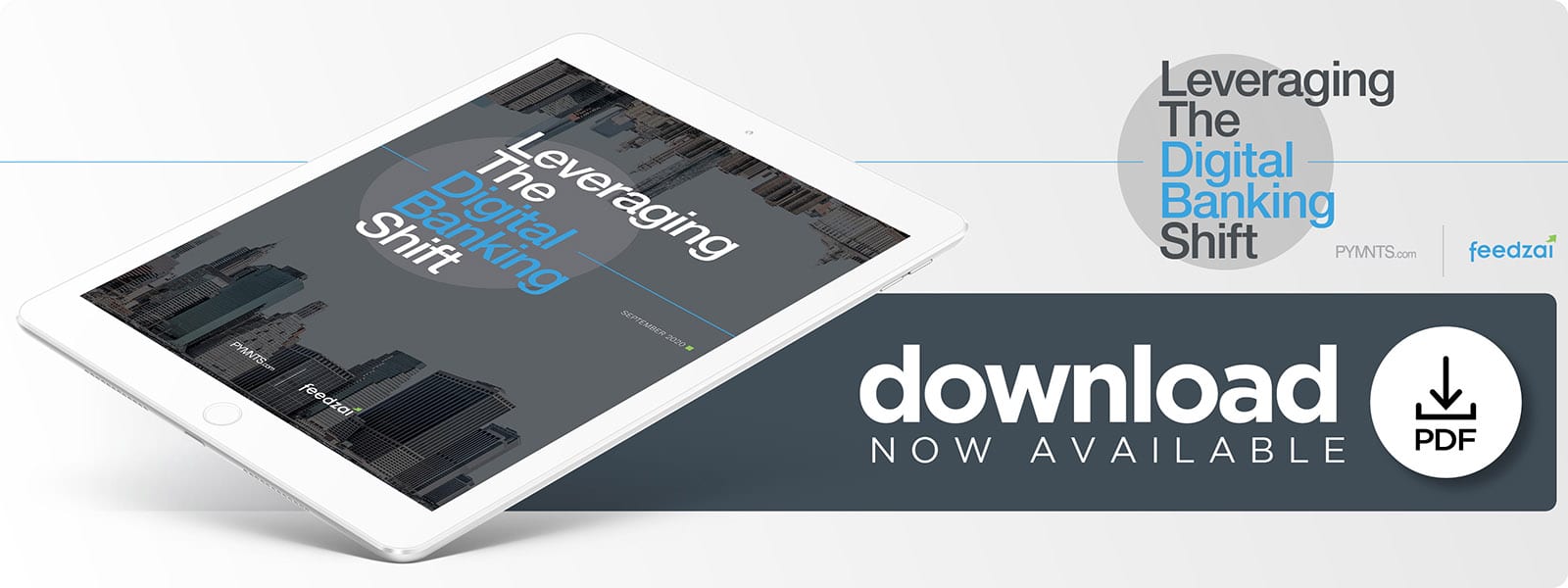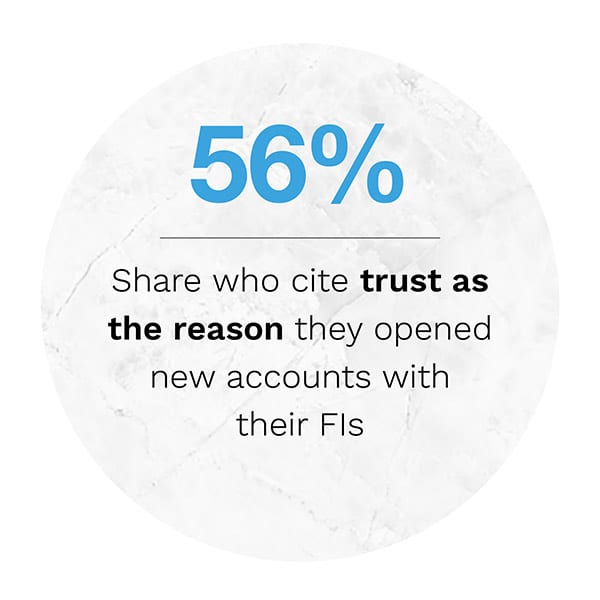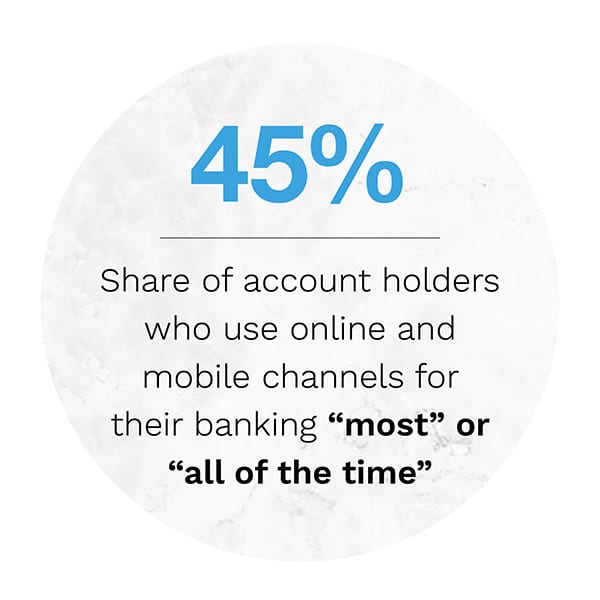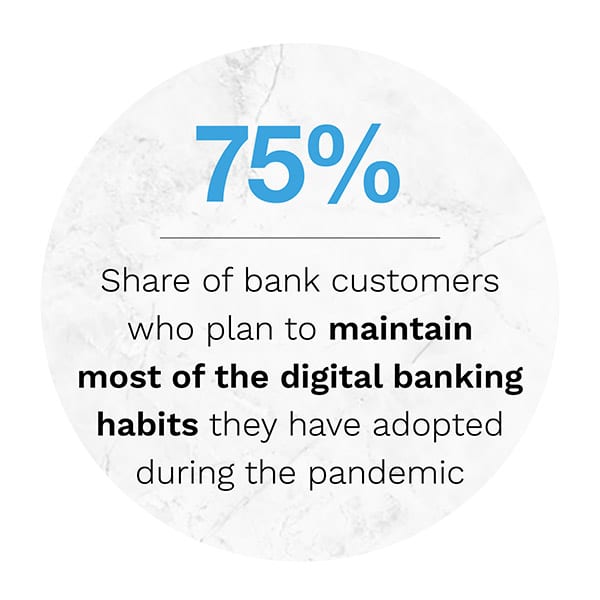 Consumers are doing a lot more of everything online these days, from ordering groceries and furniture to splurging on subscriptions for designer socks.
Consumers are doing a lot more of everything online these days, from ordering groceries and furniture to splurging on subscriptions for designer socks.
They are also turning to the internet for far more substantial and sensitive financial matters. A majority of consumers are now doing most of their banking online, out of choice and necessity – the pandemic has forced many bank branches to operate with limited hours and other restrictions.
 Moreover, consumers are not going online just to check their balances on occasion. Digital has become the primary means by which they manage their accounts — and even open new ones. Nearly 30 percent of consumers have opened new bank accounts over the past three months, according to PYMNTS’ latest research. Most of those who opened new accounts chose to do so by expanding services at institutions they already work with. The driving factor for doing so was clear. For more than 55 percent of them, the main reason was they trusted their current financial institutions (FIs).
Moreover, consumers are not going online just to check their balances on occasion. Digital has become the primary means by which they manage their accounts — and even open new ones. Nearly 30 percent of consumers have opened new bank accounts over the past three months, according to PYMNTS’ latest research. Most of those who opened new accounts chose to do so by expanding services at institutions they already work with. The driving factor for doing so was clear. For more than 55 percent of them, the main reason was they trusted their current financial institutions (FIs).
It is not difficult to see why. As consumers shift more and more of their banking online, they face greater exposure to fraud threats. PYMNTS research shows this is a mounting concern. More than half of consumers who had experienced fraud over the past 12 months are highly concerned about it recurring. These and many other insights are laid out in Leveraging The Digital Banking Shift report, a collaboration with Feedzai, based on a survey of nearly 2,200 U.S. consumers. Here are some of the other top-level findings.
 Digital banking has crossed the generational divide. Nearly 45 percent of consumers are “mainly digital,” meaning they use online and mobile channels most or all of the time for their banking. Another 21.6 percent are “omnichannel,” using digital channels as much as they do physical ones, such as visiting a branch or ATM. While millennials and younger bank customers are the most likely to employ digital tools, a plurality of baby boomers and seniors (43.5 percent) also describe themselves as mainly digital.
Digital banking has crossed the generational divide. Nearly 45 percent of consumers are “mainly digital,” meaning they use online and mobile channels most or all of the time for their banking. Another 21.6 percent are “omnichannel,” using digital channels as much as they do physical ones, such as visiting a branch or ATM. While millennials and younger bank customers are the most likely to employ digital tools, a plurality of baby boomers and seniors (43.5 percent) also describe themselves as mainly digital.
The migration to digital banking channels is not fleeting. PYMNTS research reveals that 46 percent of consumers became “digital shifters” since the onset of the pandemic — they used online or mobile banking somewhat or much more than they did before the pandemic. The shift was most pronounced in mobile banking, with 44.6 percent increasing their use of the channel during the pandemic. Most notably, these shifts are likely to last over the months and years to come. Nearly 75 percent of those who adopted new banking practices plan to maintain them.

Consumers want more sophisticated account authentication measures, beyond passwords and PINs. These measures are more commonly used than they are popular with consumers. PYMNTS research shows demand for a wider array of authentication methods, including biometrics. Among mobile users, twice as many account holders say they are interested in fingerprint scans as say their banks offer them.
To delve deeper into these and other insights on the rapidly changing world of digital banking, download the report.
About The Report
Leveraging The Digital Banking Shift, a collaboration with Feedzai, is based on a survey of 2,183 U.S. account holders, exploring how banks can address the security concerns of their customers in a rapidly changing financial landscape.